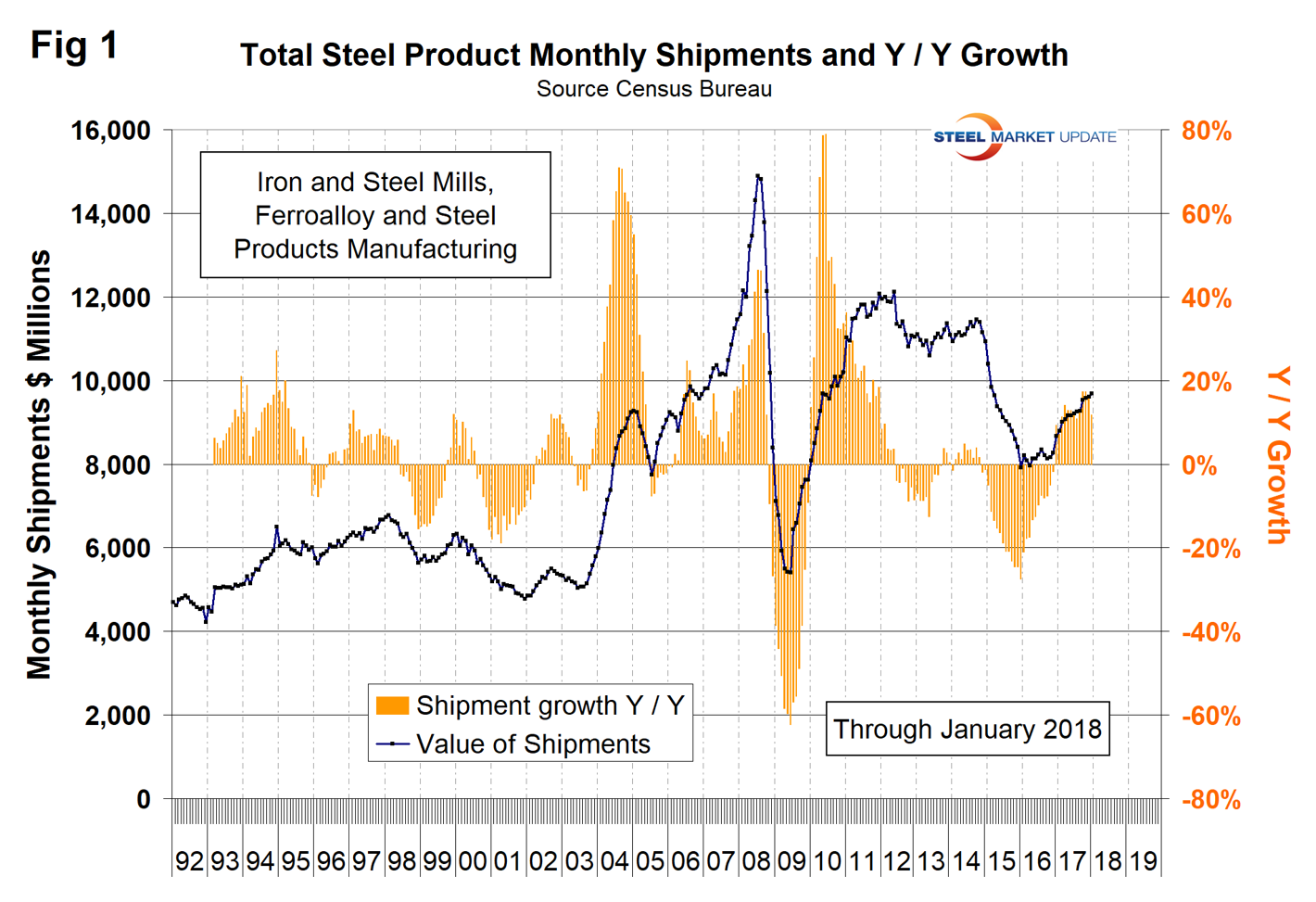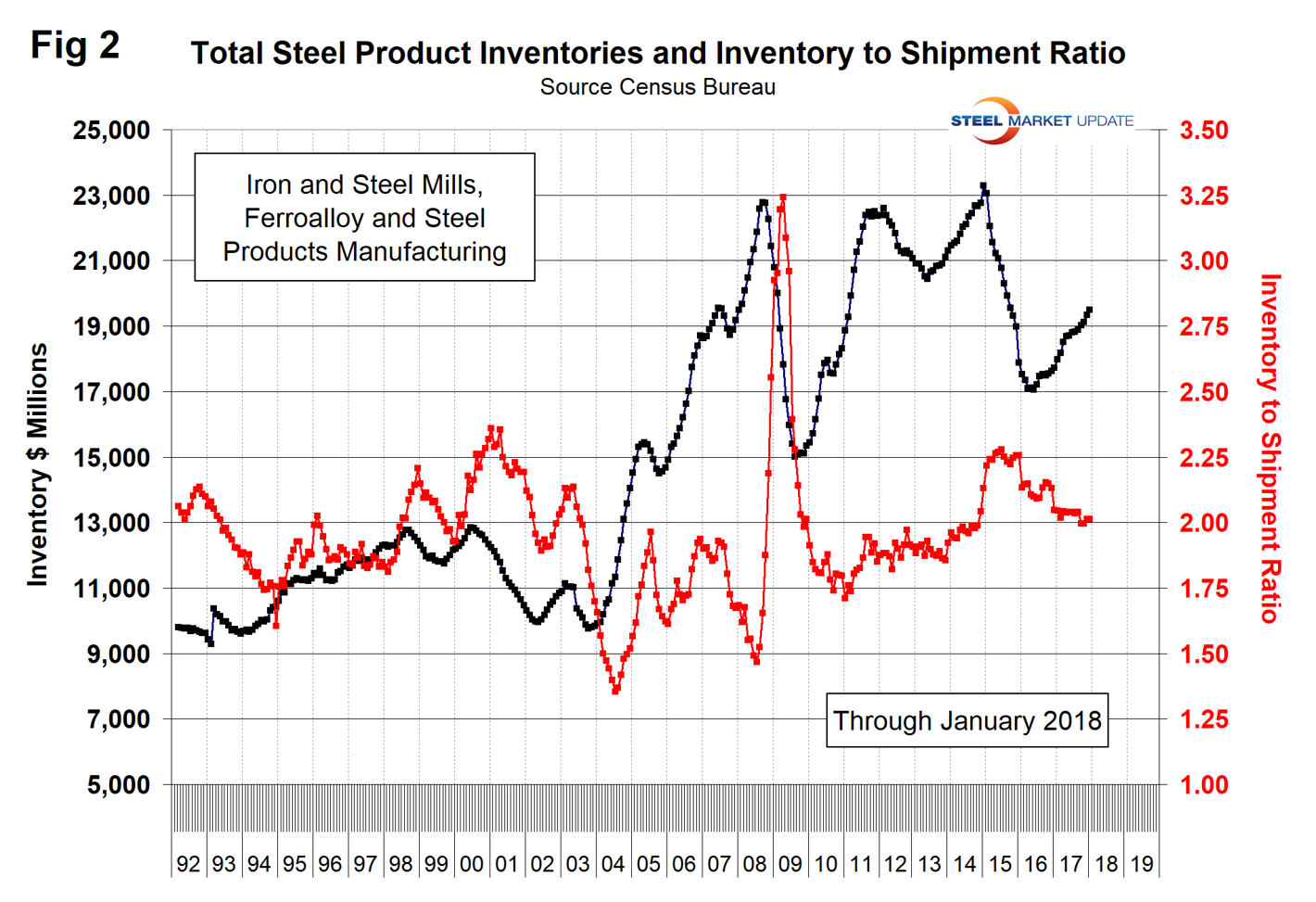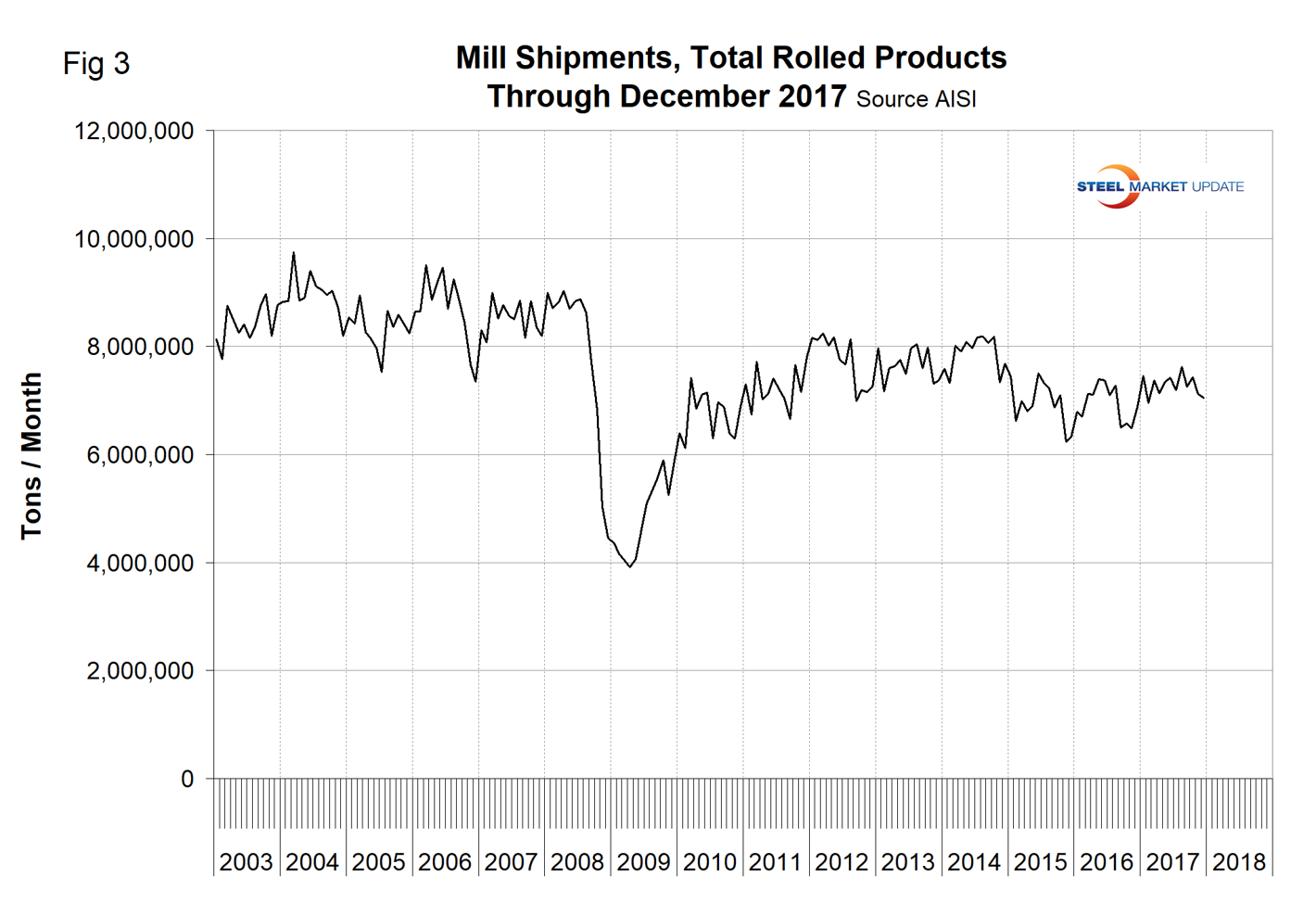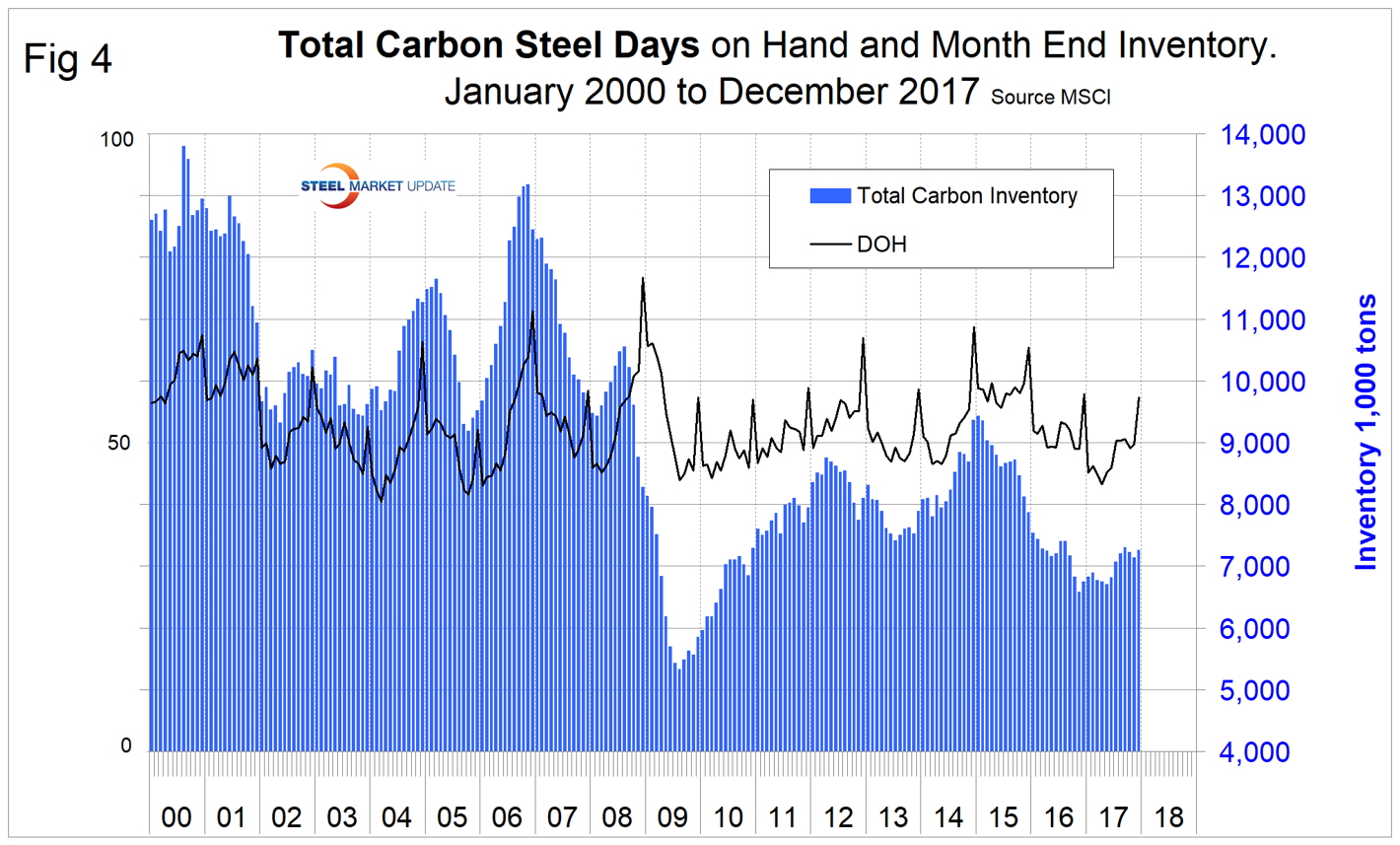SMU Data and Models

SMU Analysis: Industry Inventory at a Healthy Level
Written by Peter Wright
March 9, 2018
Steel inventories are increasing as the inventory-to-shipment ratio is decreasing—a very healthy trend for the supply chain. To efficiently manage inventory, companies generally want to keep the ratio low. A rise in the inventory-to-shipment ratio indicates that shipments are falling or the operation is keeping too much inventory on hand.
Each month, the Census Bureau reports on manufacturing shipments and inventories with a subsection titled “Iron and Steel Mills and Ferroalloy and Steel Products Manufacturing: Total Shipments and Inventories: Millions of Dollars: Seasonally Adjusted.” For the first time, Steel Market Update has extracted and analyzed this data to provide a benchmark for subscribers to compare to their own business results. We will also use this as a reality check of Metals Service Center Institute inventory and shipment data.
Results for January were released on March 6. Figure 1 shows monthly shipments in millions of dollars since 1992 with the year-over-year growth. Shipments are still 15.5 percent lower than in October 2014, but are 22.3 percent higher than January 2016. Most of the growth since then has occurred in the last 12 months as shown by the brown bars in Figure 1.

Figure 2 shows total inventory in millions of dollars and the inventory-to-shipment ratio. Since July 2016, total inventories through January 2018 grew by 13.3 percent, but the inventory-to-shipment ratio declined from 2.09 to 2.01 in that time frame. The ratio is down from 2.26 in January 2016.

SMU Comment: We try to review several different sources of comparable data to verify our conclusions. In this case, we are comparing American Iron and Steel Institute shipment data and MSCI inventories data. Figure 3 shows total rolled product shipments since 2003 based on data from AISI. Comparing Figure 3 with Figure 1 is not apples to apples because one is tons and the other is revenue dollars, but still the Census Bureau data looks more believable.

Figure 4 shows total service center carbon steel inventories as reported by MSCI. Again, comparing Figure 4 with Figure 2 is comparing tons with dollars, but the comparison looks quite good. The recession at the service center level was much worse than in the Census Bureau inventory data, which makes sense.


Peter Wright
Read more from Peter WrightLatest in SMU Data and Models

SMU Scrap Survey: Sentiment Indices rise
Both current and future scrap sentiment jumped this month, though survey participants reported responses before key trade news was announced.

SMU Survey: Sentiment splits, buyers have better view of future than the present
SMU’s Steel Buyers’ Sentiment Indices moved in opposite directions this week. After rebounding from a near five-year low in late June, Current Sentiment slipped again. At the same time, Future Sentiment climbed to a four-month high. Both indices continue to show optimism among buyers about their company’s chances for success, but suggest there is less confidence in that optimism than earlier in the year.

SMU scrap market survey results now available
SMU’s ferrous scrap market survey results are now available on our website to all premium members. After logging in at steelmarketupdate.com, visit the pricing and analysis tab and look under the “survey results” section for “ferrous scrap survey” results. Past scrap survey results are also available under that selection. If you need help accessing the survey results […]

SMU flat-rolled market survey results now available
SMU’s latest steel buyers market survey results are now available on our website to all premium members. After logging in at steelmarketupdate.com, visit the pricing and analysis tab and look under the “survey results” section for “latest survey results.” Past survey results are also available under that selection. If you need help accessing the survey results, or if […]

SMU Survey: Sheet lead times stabilize, plate contracts
Mill lead times for sheet products were steady to slightly longer this week compared to our late June market check, while plate lead times contracted, according to steel buyers responding to this week’s market survey.
